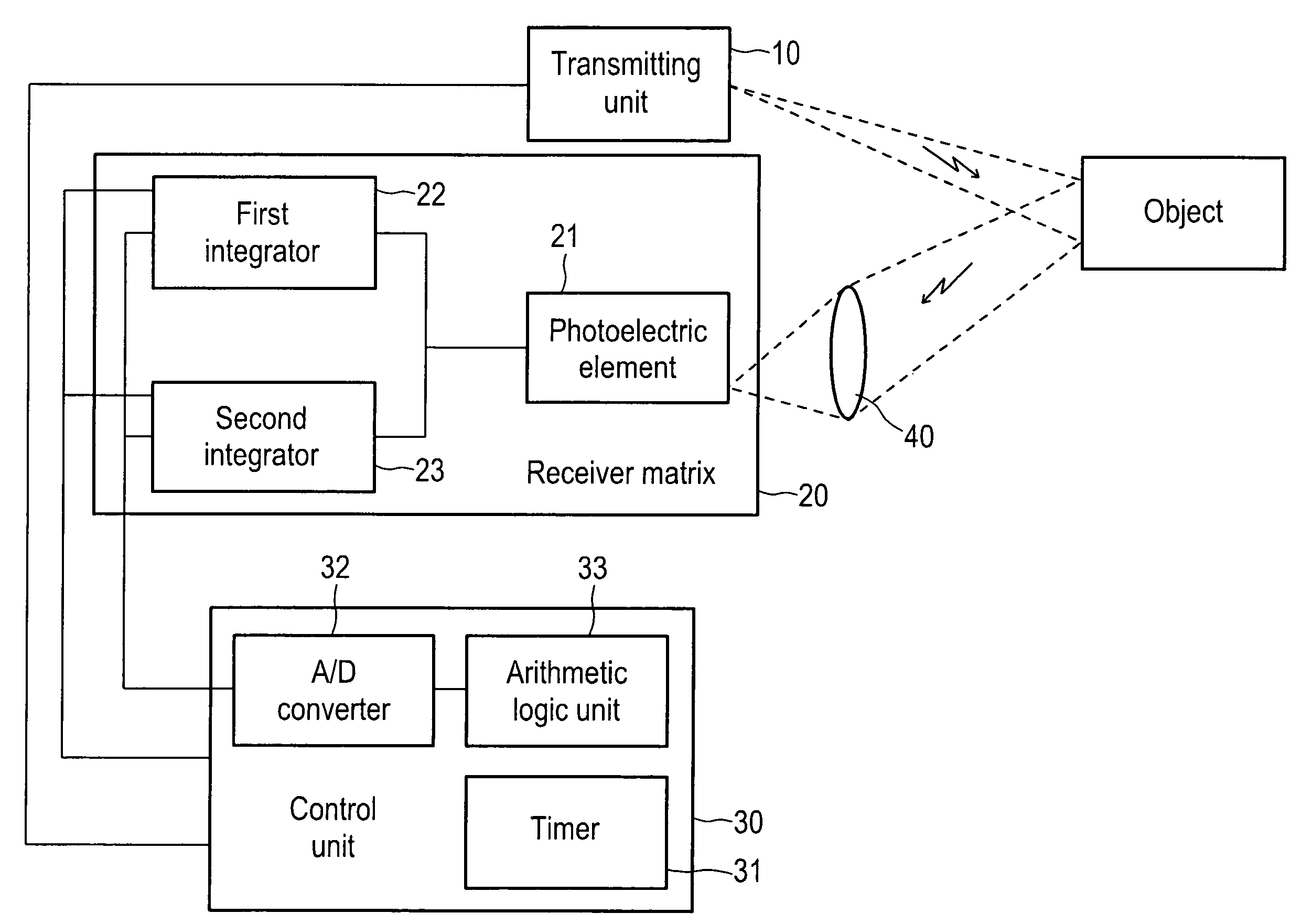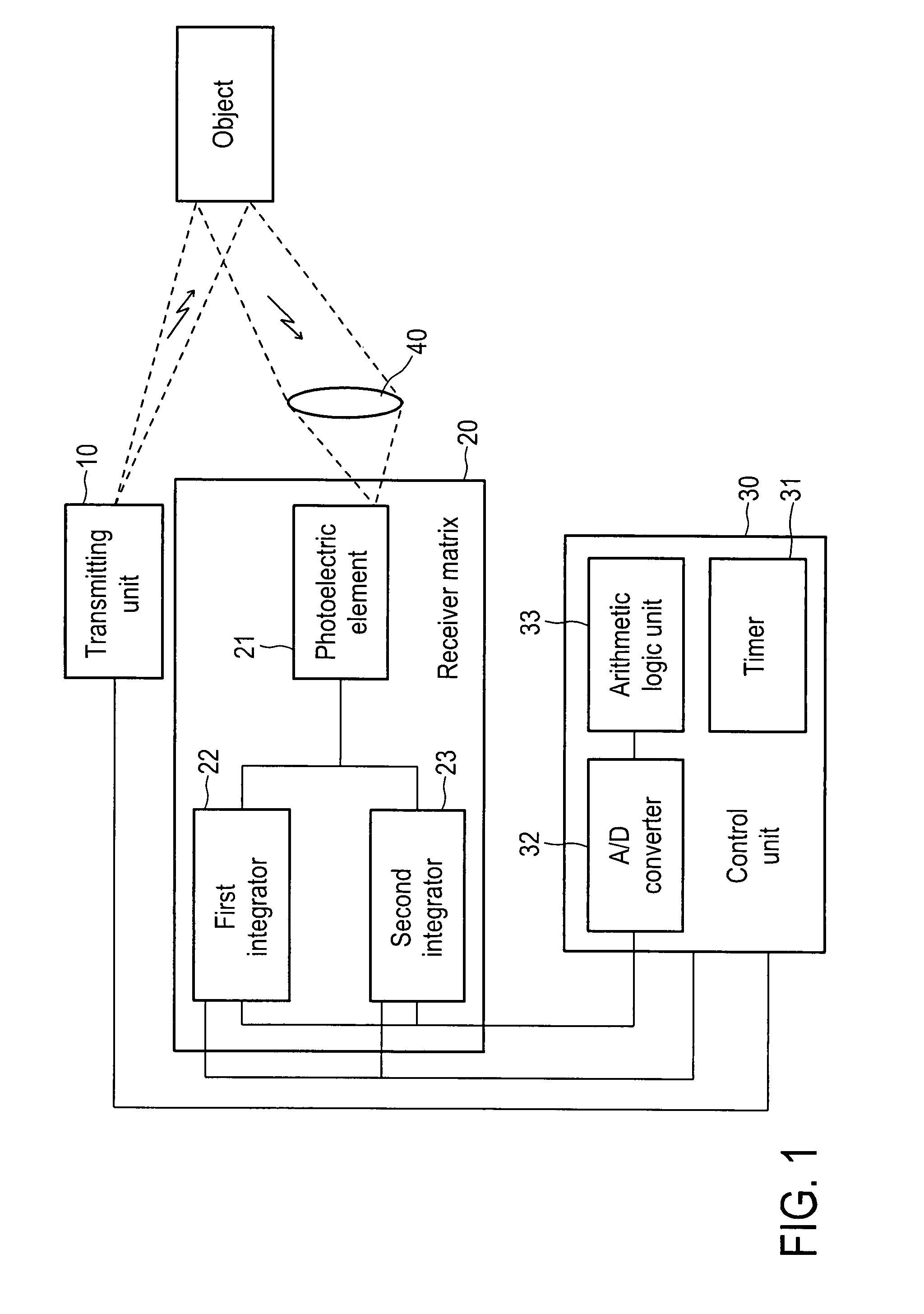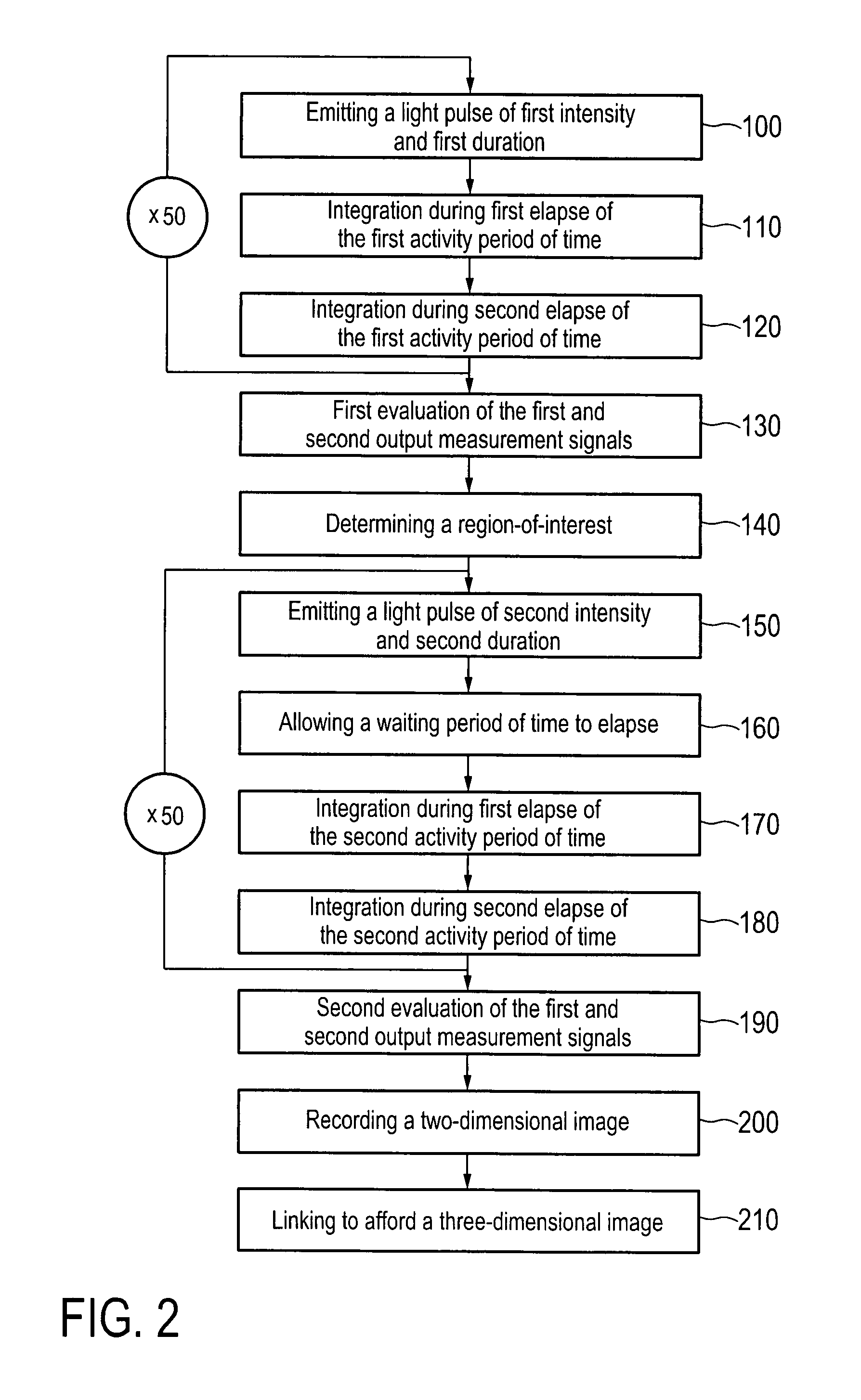Apparatus for and method of determining distance
a technology of determining distance and apparatus, which is applied in the direction of distance measurement, instruments, surveying and navigation, etc., can solve the problems of increasing distance, increasing the signal-to-noise ratio of determining distance, and increasing the distance, so as to improve the determination of distance, save energy, and reduce errors
- Summary
- Abstract
- Description
- Claims
- Application Information
AI Technical Summary
Benefits of technology
Problems solved by technology
Method used
Image
Examples
Embodiment Construction
[0077]FIG. 1 shows a view of an embodiment of the apparatus according to the invention in the form of a block diagram. The distance determining apparatus is divided into three main components, a transmitting unit 10, a receiver matrix 20 and a control unit 30, which are connected together by signal lines. The transmitting unit 10 is adapted to emit a light pulse at the instigation of the control unit 30, the pulse duration and the intensity of the emitted light pulse being predetermined by the control unit 30. The components of the emitted light pulse, which are reflected by an object, go to an optical means 40 which projects the incident reflected components onto a photoelectric element 21 or a two-dimensional array of photoelectric elements 21. The photoelectric element 21 forms part of the receiver matrix 20 which, for each photoelectric element 21, has a first integrator 22 and a second integrator 23, the integrator inputs of which are connected to the output of the photoelectri...
PUM
 Login to View More
Login to View More Abstract
Description
Claims
Application Information
 Login to View More
Login to View More - R&D
- Intellectual Property
- Life Sciences
- Materials
- Tech Scout
- Unparalleled Data Quality
- Higher Quality Content
- 60% Fewer Hallucinations
Browse by: Latest US Patents, China's latest patents, Technical Efficacy Thesaurus, Application Domain, Technology Topic, Popular Technical Reports.
© 2025 PatSnap. All rights reserved.Legal|Privacy policy|Modern Slavery Act Transparency Statement|Sitemap|About US| Contact US: help@patsnap.com



